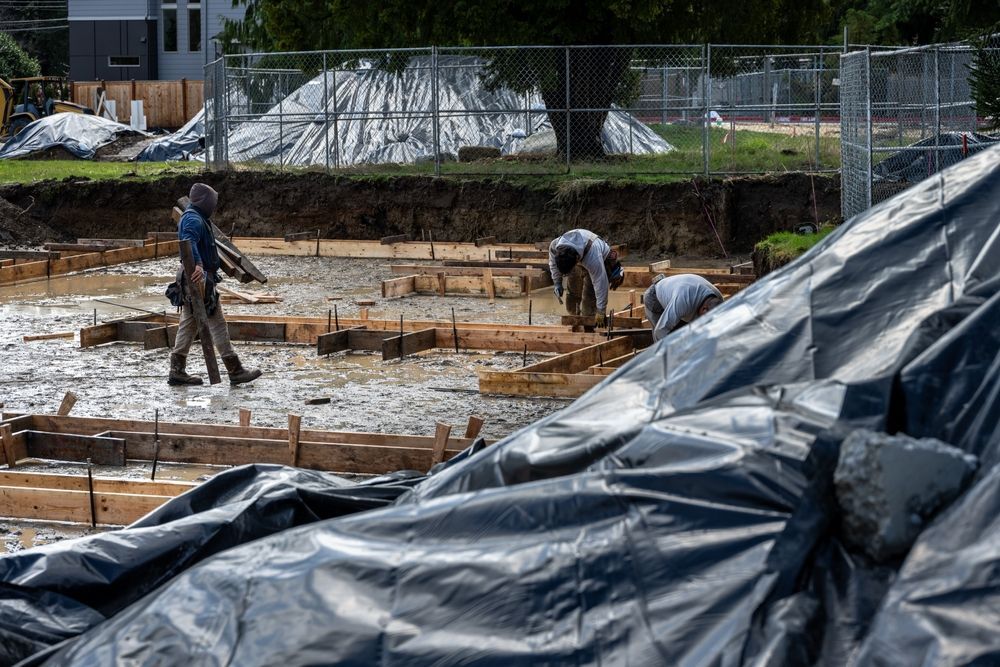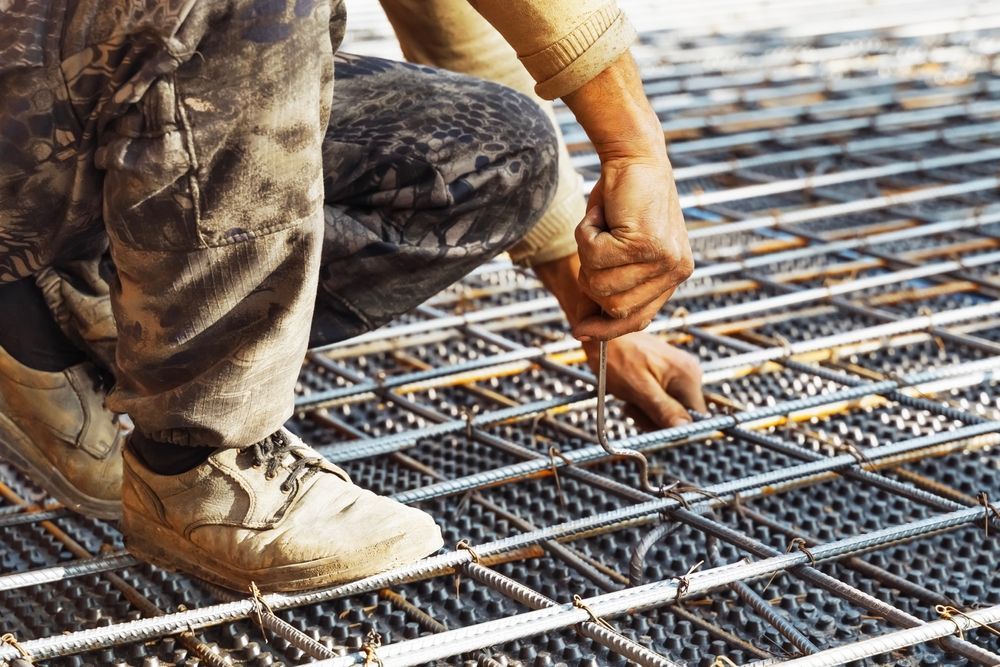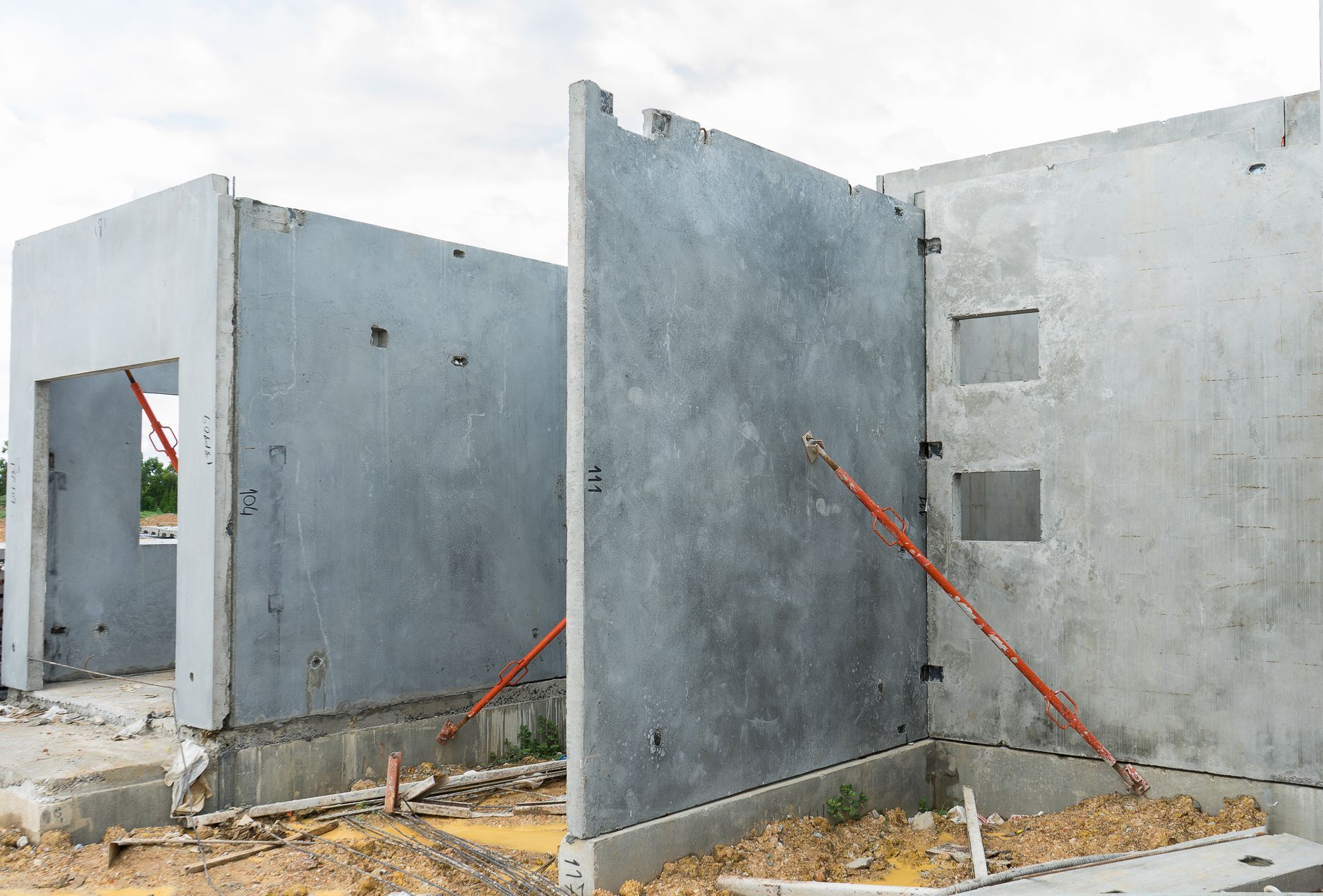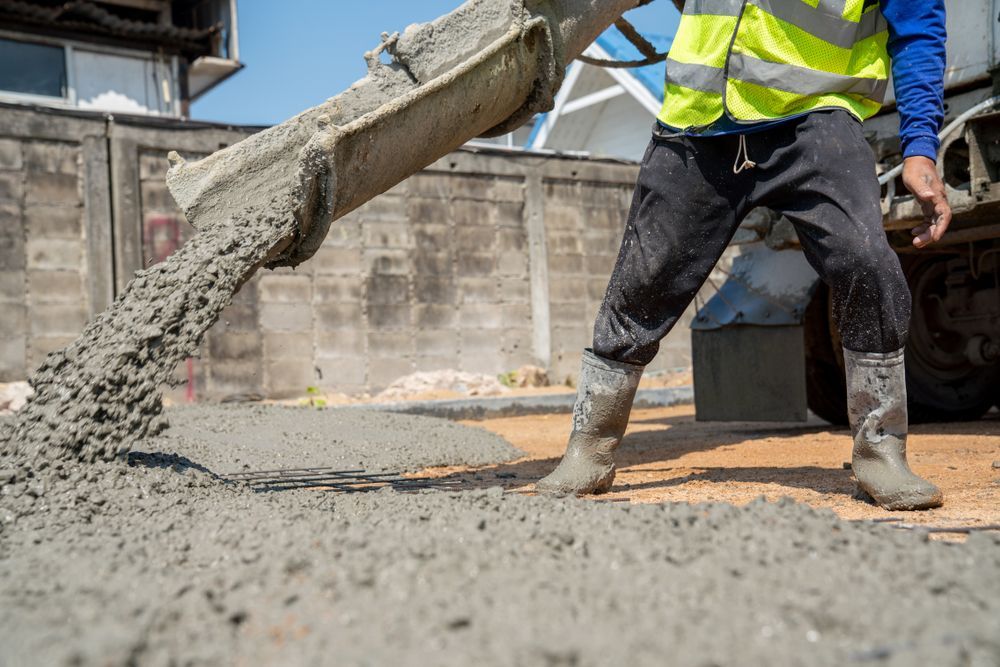Can You Pour Concrete in the Rain? What to Know
Rain on a pour day isn’t ideal, but it happens. Concrete work doesn't always line up with perfect weather, especially on tight project schedules. Contractors in the Midwest know how fast conditions can shift, and a good plan makes a difference.
The big question is: can you pour concrete in the rain without compromising the job? The answer depends on timing, preparation, and
having the right tools on hand. Before cancelling a pour or pushing ahead blindly, it helps to know what rain actually does to fresh concrete and how to stay ahead of it.
Can You Pour Concrete in the Rain Safely?
Yes, it is possible to pour concrete in the rain, but it takes careful timing and extra steps to avoid problems. Light rain before or during a pour isn’t always a dealbreaker, but heavy rainfall or poor site conditions can create weak, uneven surfaces. The main concern is water mixing into the concrete while it's still fresh. Too much water can weaken the final strength, damage the finish, and create surface scaling.

Contractors who work through unpredictable conditions know that planning ahead makes a difference. If rain is already coming down hard or storms are expected, it’s usually smarter to delay the pour. When the rain is light or clears quickly, it may be possible to continue, but only with a clear plan in place.
Protecting the surface, controlling runoff, and adjusting timing all play a role. Once concrete starts to set, added water can cause pitting, dusting, or soft top layers that won’t hold up long-term. The best move is to evaluate the site, watch the clock, and have supplies ready. Pouring concrete in the rain can be done, but only under the right conditions.
What Happens If You Pour Concrete in the Rain?
Pouring concrete in the rain without proper preparation can lead to lasting problems. Rainwater can dilute the surface, wash out the cement paste, and leave behind a soft or powdery finish. That weak top layer might look fine at first, but over time it often breaks down, leading to flaking, cracking, or surface wear under traffic and weather.
Moisture control during curing is just as important. Concrete needs a steady balance of water to gain strength. If rainwater disrupts that process, the slab may not cure evenly. This can cause low compressive strength, poor surface bonding, or hidden weaknesses that affect long-term performance.
The finish is also at risk. When the surface becomes too wet during troweling, it can trap water inside the slab. That trapped water often rises later, forming blisters or pockets that separate from the top layer. These issues aren’t just cosmetic. They weaken the surface and shorten the service life of the slab.
Fresh concrete is most vulnerable in the early hours. Once it starts setting, outside water becomes a serious threat. Protecting the mix from rain at the right moment helps avoid expensive repairs and delays down the line.
How to Pour Concrete When It’s Raining
Pouring concrete during rain takes more than just moving fast. Contractors need to stay alert, track the weather closely, and protect the site before and after the pour. The main goal is to keep excess water out of the mix while it’s fresh and to stop runoff from damaging the surface as it cures.
A successful pour during rain depends on timing, preparation, and
the right equipment. Being ready before the first drop falls can keep the job on schedule and avoid costly mistakes.
Plan Ahead for Wet Weather
Always build in a backup plan. That means keeping covers, extra labor, and water-control tools nearby in case conditions change during the job. Crews should know who’s handling site protection, runoff control, and slab coverage. These tasks go faster and smoother when they’re already assigned in advance. Waiting until rain hits slows everything down and adds risk to the pour. Surface protection should never be left to chance. Make it part of the plan from the start.
Watch the Forecast
Keep an eye on hourly weather updates, not just daily predictions. Even short breaks in the rain can give enough time for a safe pour. Track multiple sources to get a more accurate read on conditions. If skies start to darken or wind picks up, be ready to pause and protect the slab. Weather in the Midwest can change quickly, and staying one step ahead gives you more control over the outcome.
Prepare the Site for Rain
Use the site layout to move water away from the slab area. This includes sloping the subgrade, building forms that hold back runoff, and setting up temporary barriers. Remove standing water and mud before the truck arrives. A soaked base can weaken support and cause problems under the slab. Temporary drains, berms, or pump hoses help keep the area dry during the work. Use gravel or crushed rock to improve drainage in key areas when needed.
Use the Right Protection Tools
Have covers ready before the pour begins. Use plastic sheeting, curing blankets, or tarps to keep rain off the surface. Make sure they can be secured without touching the concrete. Stakes, framing, or sandbags work well. Keep enough material on hand to cover the entire slab if needed. Consider building quick tent structures or using weighted panels for large areas. Light rain can be handled with quick action. A steady downpour needs full protection from start to finish.
Get Rain-Ready Gear from Bracing Systems
When rain threatens a pour, the right tools help keep the job moving. Bracing Systems carries concrete protection products built for real job-site conditions. You’ll find plastic sheeting, curing blankets, rebar caps, formwork systems, and finishing tools that hold up under pressure.
Our team in Hanover Park works with contractors across Northern Illinois, Wisconsin, and Northern Indiana. We keep a strong inventory and move fast so crews can stay on schedule. If rain is in the forecast and you need gear that works,
contact us. We’ll help you get what the job demands.



